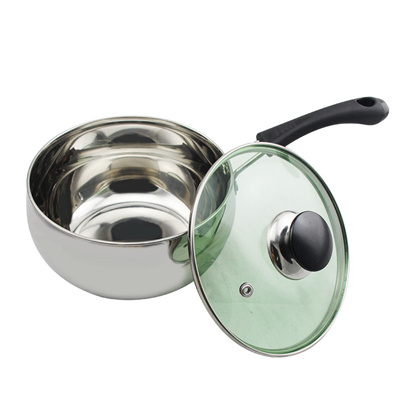Cooking is a symphony of flavors, and the sauce pan acts as the conductor that brings these flavors into harmonious alignment. With precise techniques and a keen understanding of ingredients, you can create culinary compositions that resonate on the palate. In this article, we’ll explore the concept of the sauce pan as a conductor’s baton, orchestrating a symphony of taste through balanced flavor profiles.
Balancing the Basic Elements: Just as a musical composition requires a balance of instruments, a dish demands a balance of basic taste elements: sweetness, sourness, saltiness, bitterness, and umami. The sauce pan facilitates the integration of these flavors, ensuring that no single note overwhelms the others.
Enhancing Umami: Umami, often described as the fifth taste, adds depth and complexity to dishes. The sauce pan is a masterful tool for enhancing umami through techniques like reducing broths, caramelizing onions, and deglazing to capture the essence of meats.
Elevating with Acid: Acidity is the conductor’s wand that lifts flavors and adds brightness to dishes. The sauce pan allows for precise incorporation of acidic elements like vinegars, citrus juices, or wines. A delicate reduction in the sauce pan can transform an acidic ingredient into a harmonious melody of taste.
Herbal and Aromatic Notes: Just as musical compositions are layered with nuanced instruments, dishes are enriched with herbal and aromatic notes. Simmering herbs, spices, and aromatics in the sauce pan infuses the base with subtle undertones that elevate the overall flavor profile.
Texture as Timbre: Texture plays the role of timbre in the culinary symphony. The sauce pan’s mastery in creating velvety sauces, crispy toppings, and tender meats ensures that each texture contributes to the overall composition. Consider a sauce pan-crisped topping providing a playful contrast to a creamy sauce.
Reducing for Intensity: Reduction, achieved through the controlled evaporation in the sauce pan, is the conductor’s technique for intensifying flavors. As liquids concentrate, the essence of each ingredient is highlighted, resulting in a symphony of taste that resonates with depth.
Subtle Sweetness: A touch of sweetness can add a pleasing note to savory dishes. The sauce pan’s gentle heat is a canvas for reducing sweet elements like fruit juices or balsamic vinegar, transforming them into a delicate melody that complements the composition.
Balancing the Crescendo: Just as a musical piece builds to a crescendo, a dish often crescendos in the final stages of cooking. The sauce pan’s ability to gently simmer and meld flavors allows for a controlled crescendo, ensuring that the dish’s flavors reach their peak harmoniously.
In conclusion, the sauce pan is the conductor’s baton that brings together the elements of taste in a harmonious symphony. By understanding the interplay of flavors, textures, and techniques, you can create dishes that resonate with a balanced and intricate composition of taste—a culinary masterpiece that delights the senses.







